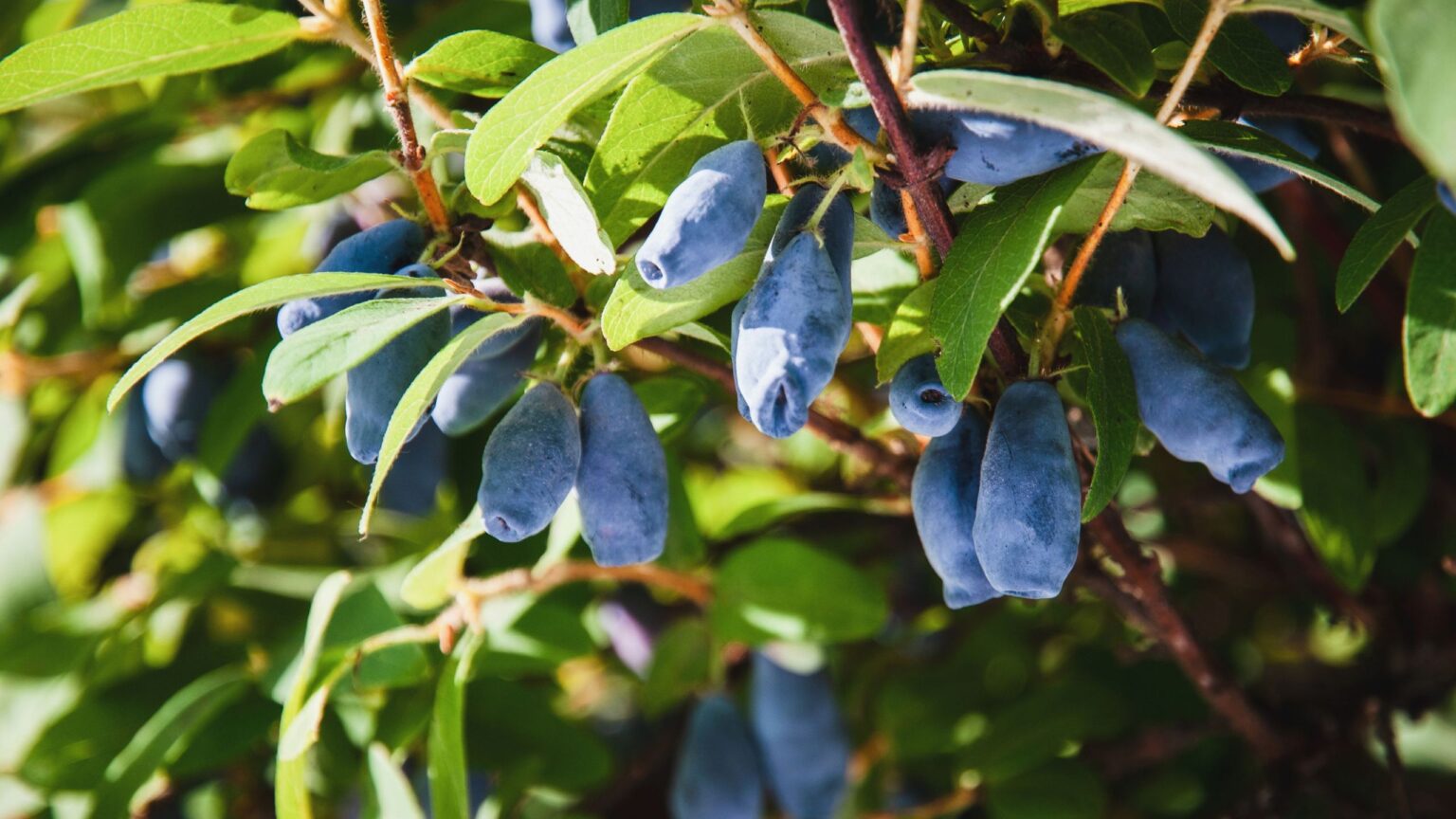Did you know that some types of honeysuckle produce edible berries? That’s right – you can learn how to grow honeyberries.
They’re actually one of the most unusual fruits you can grow here in the UK. That’s only because very few people know about them, though, because they’re really, really easy to grow.
You’re probably wondering what honeyberries taste like, and I was, too. Most people describe the flavour as a mix between blueberry and plum, and you can eat them raw or use them in desserts and jams. There’s only one way to find out, though – and that’s by learning how to grow honeyberries yourself…
What you’ll need
1. Choosing a plant
Although most types of honeysuckle produce berries, most of them aren’t edible – so you’ll need to make sure you check the label and make sure the variety you’ve chosen does grow edible berries before you buy it. You’ll need to look out for types like Lonicera caerulea and Lonicera kamtschatica.
It’s also worth noting that you’ll need more than one honeyberry bush for them to produce a successful crop of fruit.
‘They are not self-pollinating and require another variety planted nearby to allow for cross-pollination and a bountiful crop,’ explains Lucie Bradley, gardening and greenhouse expert at Easy Garden Irrigation.
‘When choosing honeyberries, select varieties that will have overlapping bloom times, such as ‘Blue Moon’ (blooming from March to May), grown alongside ‘Blue Velvet’ (typically blooming March to April).’
You can buy Lonicera kamtschatica ‘Blue Velvet’ from £24.99 at Thompson & Morgan.
2. Planting them right
You can plant honeyberries in autumn or spring, but autumn is probably the better time to get started. It’s a good time to plant other unusual fruits like goji berries, too.
‘I prefer planting in autumn, as it gives the root system time to become established whilst the plant is dormant,’ says Lucie.
Usually, honeyberry plants are sold in pots (like this honeyberry plant from Crocus), which can often be used as a guide for planting when you bring them home.
‘Dig a hole that is deep and wide enough for the roots, and keep your topsoil handy to add back in first, giving the roots plenty of nutrition as they settle in,’ advises Julian Palphramand, head of plants at British Garden Centres. You can also enrich the planting area with organic matter like compost beforehand, like Miracle-Gro Peat Free Premium All Purpose Compost with Organic Plant Food from Amazon.
‘Gently loosen the honeyberry’s roots when removing it from the pot so they’ll spread outwards into the soil,’ Julian continues. ‘Lower the plant so the roots sit flat at the same depth as it was in the container, then backfill the hole, firming the soil in as you go.’
Julian also recommends spacing your honeyberry plants at least a metre apart to encourage good airflow and account for future growth.
3. Keeping up with watering
After planting, watering is probably the most important part of learning how to grow honeyberries.
They’ll need consistent watering after planting to encourage establishment, and mulching will conserve moisture and protect the roots from frost. Julian says we shouldn’t let the mulch touch the stems, though.
‘During the first season, check the soil moisture regularly and water as needed, because newly planted honeyberries benefit from consistent dampness, but don’t let the soil become waterlogged,’ he adds.
Natural Grower Soil Conditioner, available at Amazon for £25, provides a slow-release fertiliser and can be used on the surface of the soil as a mulch.
4. Ongoing care
When I said learning how to grow honeyberries is easy, I wasn’t joking: once the plants are established, they mostly take care of themselves (outside of watering).
‘Honeyberries are reliably hardy and easy for beginners,’ says Julian. ‘By spring, you may spot new shoots, and your plant should settle and start fruiting within a year or two.’
You can prune away dead, damaged or diseased material on young plants, and further trimming can be carried out on mature plants every summer to prevent overcrowded branches – but they really don’t need extensive pruning at all.
Honeyberries are so easy to grow, it’d be a shame not to try them – right?
Read the full article here

